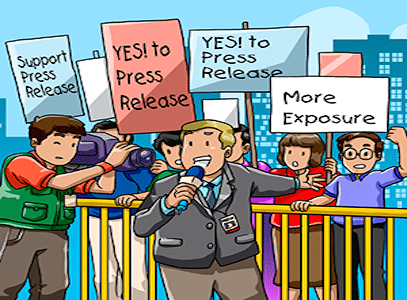

Mention the words "press release" to a roomful of PR pros and half might say they don't matter anymore and the other half might say they are all that matter to their bosses. Thanks to a recent change from Google, that second group has cause for some vindication.
Reuters reported this week that a "little-noticed change in the way Google selects search results has allowed company statements to top the list of news links shown when users search for information on businesses."
What's another term for "company statements"? That's right—press releases.
Even with this recent change to Google's search processes, it's easy for content to be swept away with the tide. How can a press release be made to swim where most content will sink?
There are a few easy steps communicators can take to demystify SEO and get their releases to the top of the search rankings. For example, using multiple forms of media, like pictures and video, can help boost search rankings and make a press release easier to find.
Elizabeth Hillman, SVP of communications with Discovery Education—and one of the trainers at PR News' Press Release Writing Boot Camp on April 21 in Washington, D.C.—offers a few tips here to help you get your press releases ranked high in Google search results.
- Write a clear headline (that’s under 22 characters)—This might be all a reporter reads or it could be the thing that makes them read your release or put it at the bottom of the pile. Make it strong and summarize the thesis of your release here.
- Release Length—The length of the press release should be under 600 words or no more than two pages to make it the most effective, and will aid in optimization. The remaining portions of your press release should provide further articulation of your news and any details that make your story stand out. Think of your release as a synopsis of your program and this is your one shot to tell the story and launch your news.
- Logo—Always include your logo in your releases. If someone searches for your company or brand name, images will come up. Additionally, this ensures that an outlet will use your current company logo if they do pick up your release.
- Keywords—Make sure you use two or three keywords throughout your headline, subhead and first paragraph to ensure consistency of messaging and increased chances of search results.
- Rich medi—Using images and video can be very effective as search components. These can help your releases rise to the top in search.
Join PR News for the Press Release Writing Boot Camp on April 21, 2015, in Washington, D.C.
Follow Elizabeth Hillman: @lizziewdc

This post makes some great points, but I don’t think the proper length for a headline is “under 22 characters,” as you suggest. That would be just 3 or 4 words, which wouldn’t be able to communicate much of anything. I’m guessing it’s a typo? Some might suggest 122 characters so it fits on Twitter. Would love to see a correction.
Hi Mark – these are all good points. I would add that you need to do research to identify the most appropriate keywords to target – there isn’t much point targeting keywords that no one searches for!
It is also worth all your press releases having a link back to more information on your website – not everyone will link back to you, but the links that you do gain will tend to help your clients website rank for non-brand content.
Like Phil I’m not 100% sure about why the headline has to be under 22 characters either – does Michelle have any research on this, or is this from personal experience?
The title to your article is 36 Characters. And I’d say it’s too short.
Thanks Mark – just what I was looking for :-)
Great article! Did you mean headlines under 22 characters or 22 words?
characters- letters
Works Great for me thanks!